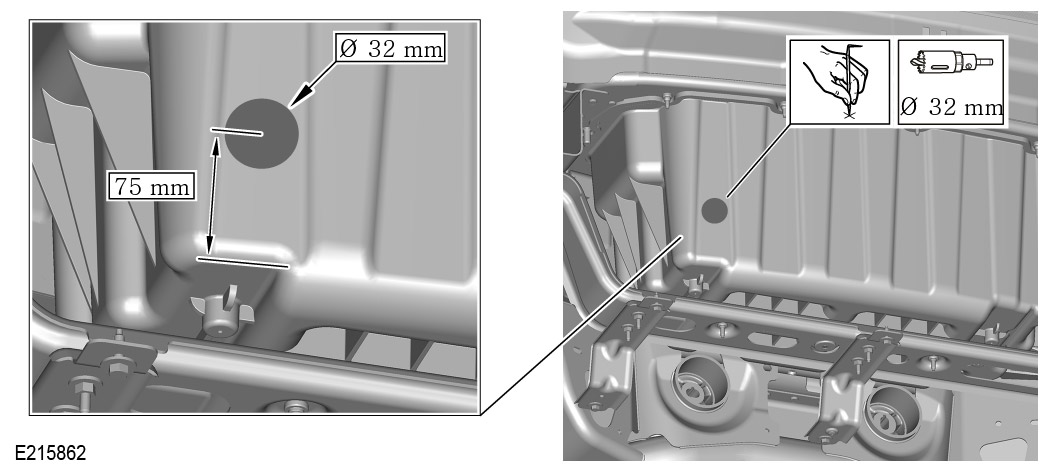
Cut a hole for the towbar wiring harness grommet, as illustrated.
- Measure and mark the center point for the hole on the air suspension compressor tray, as illustrated.
- Drill a pilot hole using a 2 mm diameter drill bit.
- Using a suitable hole cutter, cut a 32 mm diameter hole in the air suspension compressor tray.